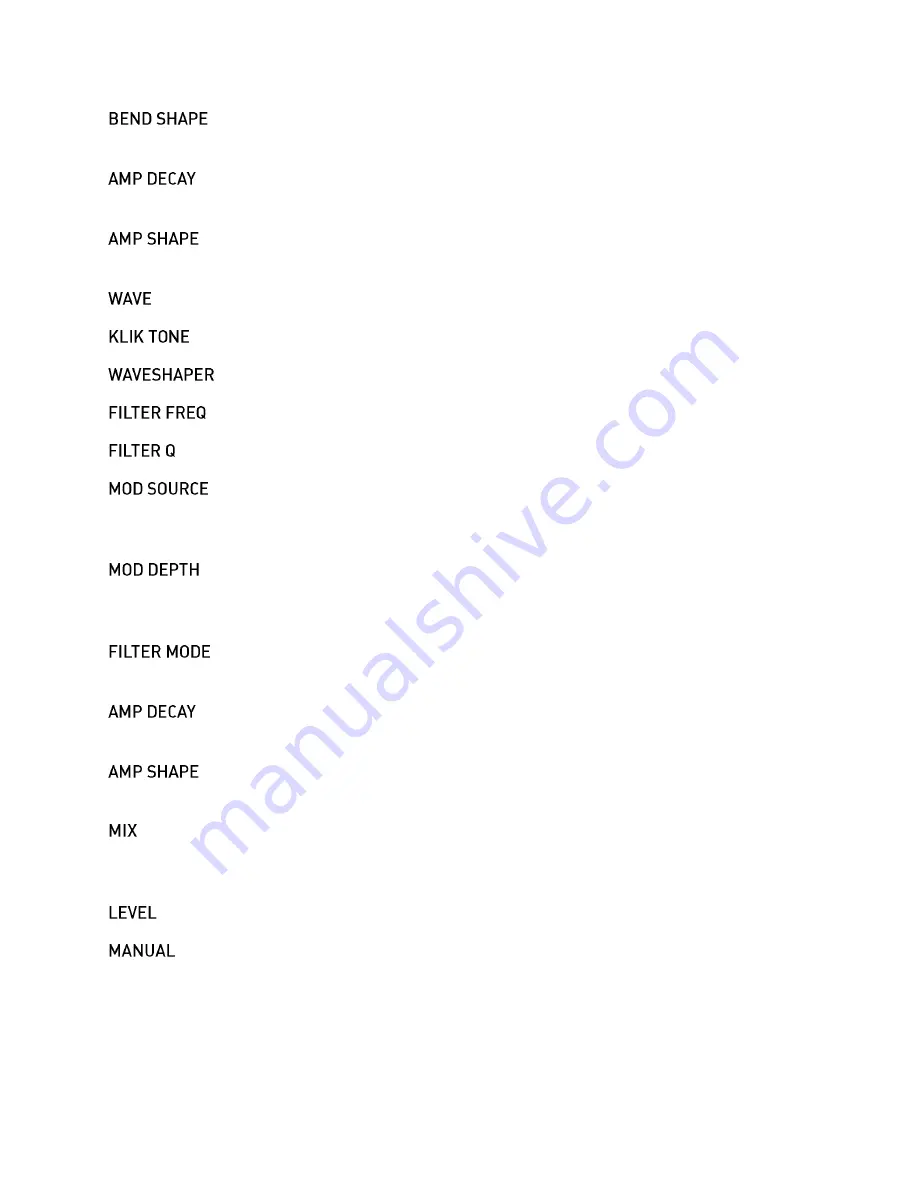
– varies the shape of the pitch-bend EG from a sharp exponential curve to a
linear ramp.
– sets the decay time of the envelope generator which controls the VCA for the
VCO, and hence how long the VCO tone is heard.
- varies the shape of the VCO amplitude EG from a sharp exponential curve to a
linear ramp.
Switch – switches the VCO output between a triangular wave and a sinusoidal wave.
– changes the brightness of a short click added to the beginning of the sound.
– controls a simple wave-folder which changes the shape of the VCO’s signal.
– sets the frequency of the multi-mode filter for the noise source.
– sets the resonance of the filter.
Switch – choose the source of modulation for the filter frequency. There are three
options: the amplitude envelope generator for the noise source, the pitch bend oscillator for the
VCO, and the VCO’s signal.
– controls how much the modulation signal selected with the MOD SOURCE
switch changes the filter frequency. This is a bidirectional control; at its center position, the filter
frequency will not be changed by the modulation signal.
Switch – chooses one of three filter response modes: low pass, band pass, or
high pass.
– sets the decay time of the envelope generator which controls the VCA for the
noise source, and hence how long the noise is heard.
– varies the shape of the noise amplitude EG from a sharp exponential curve to a
linear ramp.
– varies the relative loudness of the VCO and the noise source. At its center position, the
noise source and VCO have roughly equal loudness. Rotate the knob counter-clockwise to hear
more of the VCO, rotate it clockwise to hear more noise.
– sets the overall output level of the module.
Button – press this to trigger the module manually. Use it while setting BoomTschak’s
knobs or for live improvisation.





















